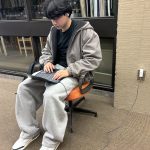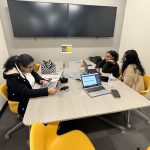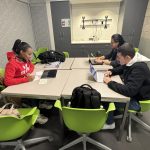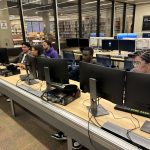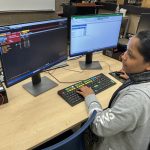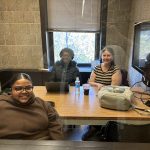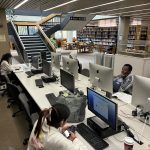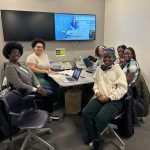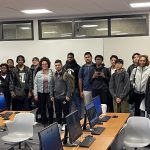Information Power and Connecting with Students
Rebecca Arzola
Information Power is a concept supported by librarians, providing students with lifelong learning competencies for real-world experiences. American Association of School Librarians (AASL) and Association for Educational Communications and Technology (AECT) built upon guidelines of American Library Association to improve library media programs to create a framework for Information Power.
The service functions of an academic library may be different from library media programs or public libraries. However, the goal of these libraries is for students to find, engage with, and critically think about information, to encourage lifelong learning and promote collaboration between students, librarians, and teachers. (Information Power, 1998)
Information Literacy is an aspect of information power where students learn which resources are available and how to reflect on what they read for meaningful learning. Moreover, Metaliteracy is another aspect of Information Power, where students learn to analyze various evolving forms of information like Artificial Intelligence, such as ChatGPT, and social media content for bias and reliability.
“As a Metaliteracy learner, one needs to be able to use information in multiple formats, including print, audio, digital, virtual, or augmented resources, to think critically about the processes, concepts, production, and reception of information, in order to adapt to new forms of technology, and to produce and share information in creative and ethical ways.” (Chen, 2023)
Together Information Power, Information Literacy, and Metaliteracy help students access, use, reflect on it, and integrate information in their learning. Information Power helps students build their individual and communal learning practices. Connecting students to a dynamic and safe learning environment where they feel supported can encourage them to discover ways to research independently. Students can learn how to retrieve, evaluate, synthesize, and use information individually or in a group setting. These skills build a foundation for lifelong learning in their pursuit of continued education, future work interactions, and personal use. (Metaliteracy, n.d.)
Rebecca Arzola
References
American Association of School Librarians, & Association for Educational Communications and Technology. (1998). Information power: building partnerships for learning. American Library Association.
Chen, C.-C., Wang, M.-L., Chu, S., Ishita, E., Kunlathidā Thūamsuk, & Shamila, M. S. (2023). Information literacy education of higher education in Asian countries. Springer. https://doi.org/10.1007/978-981-99-0522-5
Metaliteracy. Teaching Information Literacy: Beyond Research Skills. (n.d.). https://sites.google.com/view/teachinginfolit/bonus-modules/metaliteracy
Bloomberg Lab and Group Study Rooms provide student-driven learning environments that can be accessed for individual or group-centered learning
All photos by Rebecca Arzola, 2024
- Student using own laptop, who carved out a unique corner space for comfortable learning, 2nd floor
- Small group working on project – 1st Floor Study Room
- Nursing students studying Jewish culture and health, 1st floor Group Study Room
- Students accessing Bloomberg Terminals, Bloomberg Lab, 2nd floor
- Finance student using Bloomberg Terminal. Bloomberg Lab, 2nd floor
- Sociology and Political Science students, 3rd floor Group Study Room
- Students working individually in open learning environment, 2nd floor computer area
- Nursing students viewing video, 1st floor Group Study Room
- Collaboration with students, discipline faculty Yini Rodriguez and library faculty Rebecca Arzola. Information Literacy class, Concourse level Classroom
